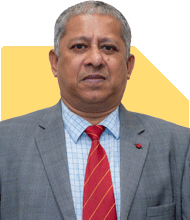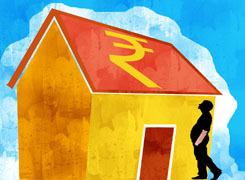Hello Sir, I am 43 yrs old having two kids studing in 6th and 1st. My monthly salary after deduction 1.5lac, having a car loan as debt. I have 10lac in mf 20lac in stock and 4lac in ppf. I have a a plot of 2k sq ft and planning to make a commercial building for second income. Should I break all my investment or should I take a loan? Plz clarify!
Ans: You have done well in managing your finances so far. Your query about funding the commercial building needs a detailed evaluation. Let me provide clarity from a 360-degree view.
Understanding Your Financial Snapshot
– You are 43 years old.
– Your monthly take-home salary is Rs 1.5 lakh.
– You have two school-going children.
– You are repaying a car loan currently.
– You have investments in mutual funds worth Rs 10 lakh.
– You have stocks worth Rs 20 lakh.
– You have Rs 4 lakh in PPF.
– You also own a plot of 2000 sq. ft.
– You are considering building a commercial property for rental income.
Your financial assets are diversified. This shows responsible financial planning. However, building a commercial property needs deeper analysis. Let me guide you step by step.
Assessing Your Current Financial Safety Net
– First, check your emergency fund.
– Ideally, you should keep 6 to 12 months of expenses.
– You didn’t mention an emergency fund.
– If you don’t have one, build it first.
– This protects your family from job loss or health issues.
– Secondly, review your life and health insurance.
– You did not mention them in your query.
– Check if you have a term life cover of at least 10 to 12 times your annual income.
– Also ensure you and your family have adequate health cover.
– Don’t mix insurance with investment.
– If you have any LIC or money-back or endowment plans, please surrender them.
– Reinvest the proceeds in mutual funds.
– Insurance should only protect your life, not grow your wealth.
Assessing the Commercial Building Plan
– Building a commercial property is a business decision.
– It comes with benefits and risks.
– Rental income can be irregular.
– Tenants may delay payments or vacate suddenly.
– Maintenance costs and property taxes will be ongoing expenses.
– Also, rental yields from commercial property in India are moderate.
– Typically, yields range from 5% to 8% per annum before expenses.
– Construction also takes time and effort.
– Market risks and legal risks are there too.
Instead of locking all your wealth in property, assess diversification. Your financial independence should not depend on just one asset.
Evaluating Whether to Break Investments or Take a Loan
You asked whether to break your investments or take a loan. Let’s examine both options.
Selling Investments:
– If you sell mutual funds, you lose the compounding effect.
– You may also pay capital gains tax.
– Long-term capital gains on equity mutual funds above Rs 1.25 lakh are taxed at 12.5%.
– Short-term gains are taxed at 20%.
– Stocks also attract capital gains taxes when sold.
– Your PPF is a long-term safe investment. Don’t withdraw from PPF.
– PPF helps build your retirement corpus.
Breaking all investments will make your portfolio empty. You will lose diversification. If your business venture fails or delays, you may face a financial crunch. This approach is not advisable.
Taking a Loan:
– A construction loan or a business loan is available from banks.
– Interest rates are around 10% to 13%, depending on your credit profile.
– As your salary is Rs 1.5 lakh monthly, banks may consider you eligible.
– However, you already have a car loan.
– Your total EMI load should not exceed 40% of your take-home salary.
– Else, it will strain your cash flow.
You must plan the EMI so that you continue your family expenses and children’s education easily.
Finding the Balanced Approach
Breaking all your investments is risky. Taking a full loan will increase your EMI burden. A balanced approach is ideal. Here is a possible step-by-step plan:
– First, estimate the total cost of construction. Include legal fees, taxes, and contingencies.
– Next, target funding 20% to 30% of the cost from your existing investments.
– This shows commitment to the bank when applying for a loan.
– Sell part of your stocks if needed, as they are volatile.
– Keep your mutual funds and PPF untouched as far as possible.
– Balance the rest through a loan.
For example:
– If your construction cost is Rs 40 lakh, arrange Rs 8 lakh to Rs 12 lakh from your side.
– Take a loan for the remaining Rs 28 lakh to Rs 32 lakh.
– Your EMI could be Rs 30,000 to Rs 35,000 monthly for 10 years, depending on the loan rate.
– Add this EMI to your car loan EMI. Make sure the total EMI is manageable.
Assessing the Future Cash Flow from Rental Income
– Before constructing, assess the rental potential.
– Check the market rent for similar commercial spaces in your area.
– Confirm if your area has demand for retail shops or office spaces.
– Ideally, your rent should cover at least 50% to 75% of your EMI.
– If rental income is uncertain, your salary alone should manage the EMI.
Don’t assume rental income will start immediately. Keep buffer funds for EMI payments in the initial vacant months.
Considering the Impact on Children’s Future Goals
You have two kids studying in 6th and 1st standard. Their higher education is your next major goal. You will need sizeable funds in the next 7 to 12 years.
Breaking all your investments now will disturb your children’s education planning. Keep your mutual funds and PPF aligned for this goal. If you liquidate them now, you will need to restart the savings journey later. This may affect your corpus size due to lost compounding.
Protecting Your Retirement Planning
At 43 years, you are entering your peak earning years. You will retire in the next 15 to 17 years. If you break your investments, your retirement corpus building will get delayed.
PPF is already your retirement reserve. Mutual funds should support it. Stocks are your wealth creation assets. If you sell them all now, you will have to take higher risks later to build your corpus again.
Suggestions to Safeguard Your Long-Term Stability
– Don’t break all investments.
– Take a part loan.
– Keep your retirement and kids’ education funds intact.
– Create a second income, but not at the cost of your financial security.
– Have a written cash flow projection for the next 5 years.
– Include EMI, household expenses, and kids’ school fees in your projection.
Evaluating the Business Risk of Commercial Property
Commercial rental is a business model. It has these risks:
– Demand supply mismatch in the locality.
– Changes in property tax or municipal norms.
– Vacancies during economic downturns.
– Competition from newer commercial buildings.
Your plan should not assume permanent occupancy. Keep buffer cash for 6 months’ EMI.
Step-by-Step Recommended Action Plan
– First, finalise the construction cost estimate.
– Second, set aside your emergency fund and insurance needs.
– Third, allocate 20% to 30% of the cost from your savings.
– Prefer reducing stock exposure rather than mutual funds or PPF.
– Fourth, apply for a construction loan to fund the balance amount.
– Fifth, plan your EMI to stay below 40% of your take-home salary.
– Sixth, continue your SIP in mutual funds for long-term goals.
– Lastly, start building rental contracts before construction completes.
My Analytical Insights on Loans vs Investment Liquidation
Selling investments is a one-time irreversible decision. Loans give you time to repay while your assets grow in value.
If you sell all your assets today, you stop your wealth-building journey. Then you depend only on your job and rental income. If your business struggles, your finances will face stress.
Taking a loan keeps your wealth-building journey intact. You repay the loan from your salary and later rental income. Meanwhile, your mutual funds and PPF continue to compound.
Risk Management Measures to Follow
– Don’t overestimate rental income.
– Keep an emergency reserve of at least Rs 5 lakh.
– Have a health insurance policy of Rs 10 lakh for the family.
– Take a pure term life insurance of Rs 1 crore minimum.
– Review your loans every year. Prepay when you receive bonuses.
– Don’t use credit cards or personal loans to fund construction gaps.
– Continue your investments even during loan repayment.
Alternative Second Income Options
You are already taking the first step towards second income. But also explore:
– Upskilling for freelance work in your profession.
– Investing in diversified mutual funds for long-term passive income.
– Systematic withdrawal from mutual funds after 10 years.
Don’t depend solely on rental income. Diversify your second income sources too.
Finally
Your thought to create a second income is appreciable. But breaking all your investments is not recommended. Instead, take a construction loan and part-fund with your own savings.
This will keep your long-term goals on track and create a steady second income.
Plan your construction, finance, and rental strategy carefully. Review your cash flow, insurance, and family’s needs before starting.
Balance growth, safety, and income sources. That is the smart way to build wealth.
Best Regards,
K. Ramalingam, MBA, CFP,
Chief Financial Planner,
www.holisticinvestment.in
https://www.youtube.com/@HolisticInvestment




















.jpg)